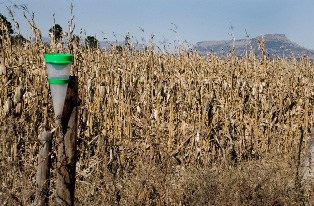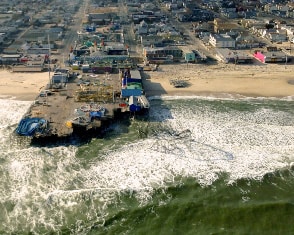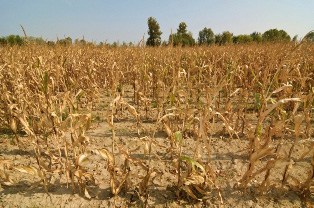What are the top 5 most expensive natural disasters in U.S. History?
Natural disasters often strike with little or no warning, disrupting lives as they damage and destroy homes and businesses.
You may suffer damages when Mother Nature unleashes severe storms and droughts, but having adequate insurance enables homeowners and businesses to replace lost property and move on with their lives.
 Damage from natural disasters often occurs because homes and businesses weren’t built to withstand them, says Patrick Leon Abbott, author of the book “Natural Disasters” and a professor emeritus of geology at San Diego State University.
Damage from natural disasters often occurs because homes and businesses weren’t built to withstand them, says Patrick Leon Abbott, author of the book “Natural Disasters” and a professor emeritus of geology at San Diego State University.
Insured buildings often can be improved when they are rebuilt or repaired, he adds. For example, homes on flood plains can be elevated to make them safer. In wildfire-prone communities, burned wood roofs can be replaced with fire-resistant materials.
Here are the five most expensive disasters through 2012, the final year for which National Oceanic and Atmospheric Administration (NOAA) figures are available. The amounts are adjusted for inflation to reflect 2013 values.
—-
 5. Hurricane Andrew: $44.8 billion in damage, 61 deaths
5. Hurricane Andrew: $44.8 billion in damage, 61 deaths
Hurricane Andrew is remembered for the devastating winds that destroyed neighborhoods in southern Florida in August 1992. In addition to creating $44.8 billion in damage, the hurricane took 61 lives. It affected mainly Florida, Louisiana and the Bahamas.
Amy Bach, executive director of the United Policyholders consumer group, says after Hurricane Andrew, insurance companies began shifting costs to consumers to limit storm-damage payouts. An example is requiring “wind deductibles” for properties in hurricane-prone regions, she says. Read your homeowners policy carefully to make sure your coverage is adequate, she advises. It is important to have adequate home insurance for hurricane damages.
—-
 4. 1980 drought: $56.4 billion in damage, 10,000 deaths
4. 1980 drought: $56.4 billion in damage, 10,000 deaths
Farming took a big hit during the drought of 1980. The NOAA says it caused $56.4 billion in damage and about 10,000 deaths between June and September, ranking the drought among the nation’s worst dry spells.
Many cattle producers were forced to reduce their herds when pasturelands dried out in the Midwest and the Southern Plains, reducing feed for livestock.
Farmers aren’t the only ones who suffer during droughts, however. Businesses and homeowners often find that their properties are threatened. When droughts and heat waves strike, the risk of fire increases. In addition to buying adequate insurance, businesses and homeowners need to clear dry vegetation away from structures during heat waves, says Michael Barry, a spokesman for the Insurance Information Institute (III).
“Even a spark from a lawnmower on the right day can cause terrible problems,” says Michele Steinberg, wildland fire projects manager for the National Fire Protection Association.
—-
 3. Superstorm Sandy: $65.7 billion in damage, 159 deaths
3. Superstorm Sandy: $65.7 billion in damage, 159 deaths
Superstorm Sandy took the lives of 159 people in October 2012. It also destroyed at least 650,000 homes, according to an October 2013 report in USA Today. NOAA sets the storm damage toll at $65.7 billion.
The storm brought record high-water levels to parts of New York, New Jersey and Connecticut. Sandy’s lesson for consumers was that you should consider buying flood insurance even if there’s only a moderate chance your home will be flooded, Bach says.
“The worst thing about Sandy is that so many people aren’t getting compensated at all, because they didn’t think they needed flood insurance,” Bach says.
—-
 2. The drought of 1988: $78.8 billion in damage, 7,500 deaths
2. The drought of 1988: $78.8 billion in damage, 7,500 deaths
Farmers took the brunt of the punishment in this natural disaster, when crop production failed to meet expectations.
The federal government had forecast that farmers in 1988 would produce 7.3 billion bushels of corn, but they only produced 4.9 billion, because of the summer drought and heat wave. With fewer bushels of corn to sell, the farmers were not able to earn as much money as had been expected. The drought covered 36 percent of the central and eastern U.S.
The drought’s damage totaled $78.8 billion. According to NOAA, about 7,500 people died as a result of the heat wave. Deanna Orwig, an insurance agent in Iowa, says most crop farmers protect themselves with agricultural insurance that compensates them if their crops fall below 85 percent of their historic yields. The cost of such insurance varies by crop and location, says West Des Moines, Iowa, crop insurance agent Eric Sorensen. Typically, the cost of insuring a season’s corn crop ranges from $25 to $50 per acre.
—-
 1. Hurricane Katrina: $148.8 billion in damage, 1,833 deaths
1. Hurricane Katrina: $148.8 billion in damage, 1,833 deaths
On Aug. 29, 2005, Hurricane Katrina struck near Miami, and then hit the Louisiana and Mississippi coastlines. It flooded parts of Alabama, Florida, Georgia, Indiana, Kentucky, Mississippi, Ohio and Tennessee. According to CNN, more than 1 million people were displaced by this devastating storm. There were an estimated 1,833 deaths and damage costs reached $148.8 billion.
The failure of the New Orleans levee system often has been blamed for much of the flood destruction in that city. A levee — also called a dike — is an embankment of earth and rock built to prevent floods – in this case, the levees weren’t able to contain the Mississippi River within its banks.
—-
Learn more about the top 5 natural disasters by watching our video.
